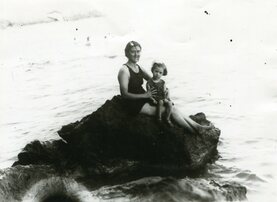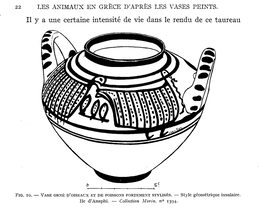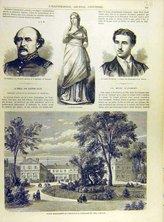BULLETINS
|
…why did the French navy boat return to Toulon empty? Why did the Muse d’Anaphé not make her way to France as originally hoped following the heartfelt report from archaeologist Raoul-Roquette?
[...] It was this inappropriate offer that triggered the rage of Alby’s nephew, a Greek “de race et d’esprit”. Upon receiving the low offer, the Alby’s heir apparently said: “tomorrow, I will have my stature transported to Boulevard des Italiens, and in the presence of your elegant Parisians, I will destroy it with a hammer, so they can see the contempt our ancient masters would have felt for them if only they could see them”. Piergiorgio Pepe, research notes, 2019. |

Elektra Apostolou (1912-1944), a communist resistance fighter of the EAM (Εθνικό Απελευθερωτικό Μέτωπο) and artist, who was involved in the women’s movement, later tortured and murdered by the Greek secret police collaborating with the German occupying forces . She was also deported to the island [Anafi] in 1939, with her daughter Agni, born just before her transfer, under the dictatorship of Metaxas. Her friend, the feminist writer Dido Sotiriou, dedicated a book to her in 1961, Elektra, which has not been translated to French. I cannot read it. I learn to visually recognise its transcript, Ηλέκτρα.
Émilie Notéris, Breaking into the Waves of Anafi, 29-30, Catalogue Multitudinous Seas, 2018. Picture from the online “Gateway to Anafi Photo-Archive” by Margaret Kenna, University of Wales.
Émilie Notéris, Breaking into the Waves of Anafi, 29-30, Catalogue Multitudinous Seas, 2018. Picture from the online “Gateway to Anafi Photo-Archive” by Margaret Kenna, University of Wales.
|
Instead of referring to a political system of a deliberately structured kind, “totalitarianism” in Arendt’s sense means a chaotic, nonutilitarian, manically dynamic movement of destruction that assails all the features of human nature and the human world that make politics possible. “Everything we know of totalitarianism demonstrates a horrible originality . . . its very actions constitute a break with all our traditions…”
Margaret Canovan, Arendt’s theory of totalitarianism: a reassessment, in The Cambridge Companion to Hannah Arendt, 25-43, Cambridge University Press, 2000. |
Rural fascism and city or neighborhood fascism, youth fascism and war veteran's fascism, fascism of the Left and fascism of the Right, fascism of the couple, family, school, and office: every fascism is defined by a micro-black hole that stands on its own and communicates with the others, before resonating in a great, generalized central black hole. What makes fascism dangerous is its molecular or micropolitical power, for it is a mass movement: a cancerous body rather than a totalitarian organism.
Gilles Deleuze and Felix Guattari, A Thousand Plateaus, 214-215, University of Minnesota Press, 1987. |



